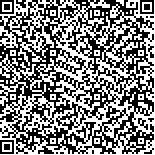| 引用本文: | 刘玥,钱霙婧,马林,王鹏,荆武兴.月球低能返回轨道设计的混合自适应遗传算法[J].哈尔滨工业大学学报,2016,48(4):79.DOI:10.11918/j.issn.0367-6234.2016.04.013 |
| LIU Yue,QIAN Yingjing,MA Lin,WANG Peng,JING Wuxing.An adaptive genetic algorithm for low energy lunar return trajectory design[J].Journal of Harbin Institute of Technology,2016,48(4):79.DOI:10.11918/j.issn.0367-6234.2016.04.013 |
|
| 本文已被:浏览 2848次 下载 1439次 |

码上扫一扫! |
|
|
| 月球低能返回轨道设计的混合自适应遗传算法 |
|
刘玥1,钱霙婧2,马林1,王鹏1,荆武兴3
|
|
(1.航天东方红卫星有限公司,100094北京; 2. 北京工业大学 机械工程与应用电子技术学院, 100022北京; 3.哈尔滨工业大学 航天学院,150001哈尔滨)
|
|
| 摘要: |
| 针对月球探测器低能量返回轨道设计问题,在椭圆四体问题下建立探测器动力学模型,考虑太阳引力与月球椭圆运动对探测器轨道的影响,并分析探测器低能量返回轨道的存在性与轨道动力学特性,以及针对设计月球最低能量返回轨道过程中模型强非线性、全局优化性能差等现象,提出了一种混合自适应遗传算法用于寻找月球探测器返回地球所需的最低能量以及对应的转移轨道,算法根据种群适应度数据自适应改变进化特征,提高了种群向全局最优点进化的效率,降低了计算量.仿真结果表明,此种算法可以精确高效地计算月球探测器返回地球所需的最低能量,所需的速度脉冲仅为传统的双曲拼接法的75%,显著节约了能源消耗.
|
| 关键词: 月球探测器 返回轨道 低能量 自适应 遗传算法 |
| DOI:10.11918/j.issn.0367-6234.2016.04.013 |
| 分类号:V448.231 |
| 文献标识码:A |
| 基金项目:国家自然科学基金(11172077);高等学校博士学科点专项科研基金(20112302110055). |
|
| An adaptive genetic algorithm for low energy lunar return trajectory design |
|
LIU Yue1, QIAN Yingjing2, MA Lin1, WANG Peng1, JING Wuxing3
|
|
(1.DFH Satellite Co. Ltd., 100094 Beijing, China; 2.College of Mechanical Engineering and Applied Electronics Technology, Beijing University of Technology, 100022 Beijing, China; 3.School of Astronautics, Harbin Institute of Technology, 150001 Harbin, China)
|
| Abstract: |
| To design low energy return trajectory for unmanned lunar probe, the dynamic model of the probe is developed under the elliptical four body problem in consideration of the effect of sun's gravitation and lunar elliptical motion to the probe's orbit. The existence and the dynamical characteristics of the return trajectory are analyzed. To deal with the strong nonlinearities of the dynamic model and the local convergence in the optimal process, an adaptive genetic algorithm is proposed which can adjust the self-evolution parameters according to the fitness of the population to improve the effectiveness of the evolution of the population to the global optimal point as well as to reduce the computation burden. According to the simulation results, the algorithm works well in optimizing the energy needed for the lunar probe to return to Earth, which is only 75% of that in the traditional hyperbolic matching method.
|
| Key words: lunar probe return trajectory low energy adaptive genetic algorithm |







